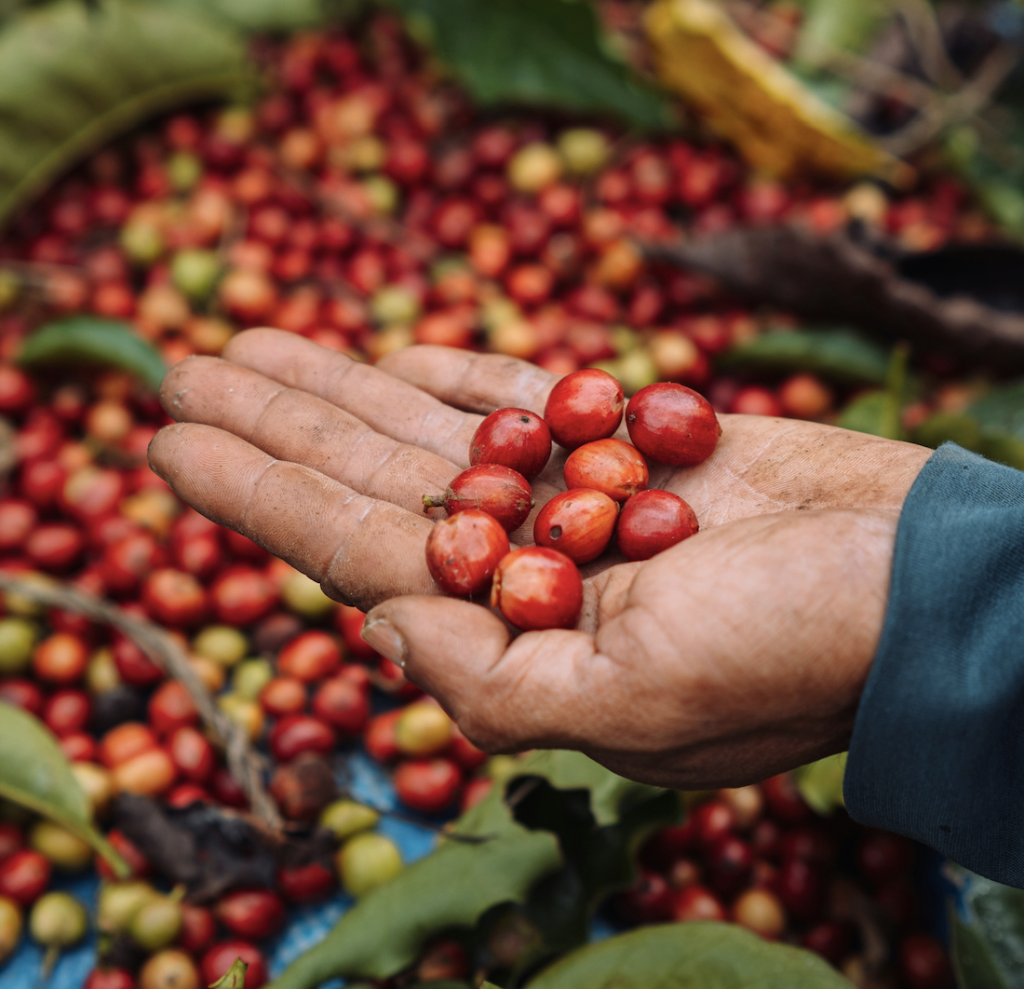We’ve recently introduced a completely new Sampling module in Agiblocks. It significantly enhances the quality control, efficiency, and overall management of commodities, leading to better risk management, cost savings, and improved customer satisfaction. You can read more about it here, but today we’d like to talk about the timing of the latest efforts of our CTRM software to make your daily workflow easier and more efficient: during a dynamic era in the coffee market.
Global coffee market
Coffee is consumed in such great quantities; it is the world’s second largest traded
commodity, surpassed only by crude oil. The market for our most beloved beverage after water and tea is worth almost 140 billion dollars worldwide, so you can imagine the trade is indeed a very lively one – it’s an economy in and of itself.
Roasters, packers, growers and traders depend on the commodity, as does the coffee shop around the corner and the massive chains like Starbucks and Dunkin’ Donuts. Established markets in Europe and North America make up a large part of global demand, but coffee consumption is growing rapidly in emerging markets too.
In other words: fluctuations in the market for coffee are going to be noticed. Especially when coffee prices rise at virtually unprecedented levels.
Price levels
Over the first four months of the year, prices have increased by 30 percent, in line with the trend that has been holding steady since fall of last year. According to the ICO, the wholesale price index for robust beans was up 17 percent in April alone – the highest level robust has traded at since 1979. Going back further, to November 2023, coffee prices have increased by as much as 62.96 percent over that 7-month period. Which, in turn, has led to increasing costs for a range of other products, as coffee chains and producers are passing their risings costs onto the consumer. Even with the continued rise in production, usually offsetting price levels, the price of robusta is holding strong while price of robusta futures on the International Commodities Exchange (ICE) has reached a 16-year high. The ICO has said that while worldwide coffee consumption has been increasing, demand far exceeds supply.
Several factors play into the aforementioned dynamics. For starters, the number of coffee enthusiasts the world over is on the rise, there is a noticeable expansion of coffee shop chains everywhere, while/where specialty and premium coffee products are growing in popularity too. By next year, it is estimated that as much as 56 percent of total market spending will be on coffee shops, representing 10% of the coffee segment’s volume.
At the same time, the usual drivers of markets and prices play their part as well: climate change, globalization and even AI. Let’s look at a few key trends.

Innovation
We’re seeing changing trends in the way people consume coffee, such as looking for craft and ‘an experience’, diversification of flavours, and revival of blends). Expert Market Research goes on to name a few more: “The increasing popularity of instant coffee; the rising popularity of speciality coffee houses; the growing use of milk alternatives; and the growing focus on sustainability are positively impacting the coffee market growth.”
“Players in the coffee market are increasingly innovating with the latest technologies and ingredients to expand and innovate their offerings”, the article goes on to say. “Some of the latest technologies utilised include app-based transactions, automation, and even drones for convenience and faster delivery of products. Some of the new product innovations include the use of dairy alternatives, such as oat milk which resonates with the increasing demand for vegan products, and the introduction of coffee-based cocktails.”
“Speciality coffee houses have become a major trend propelling the global coffee market growth owing to their emphasis on quality, often sourcing single-origin or direct-trade beans that offer unique flavour profiles. They frequently pair their coffee offerings with high-quality baked goods and other food items, often sourced from local bakeries or made in-house. This not only enhances the coffee experience but also supports local producers, creating a sense of community and localism that appeals to many consumers.”
Sustainability
Growth in the coffee trade is very much affected by the increasing awareness about sustainability too. That includes initiatives that stimulate recycling, reducing packaging waste and the widespread implementation of reusable cups. But sourcing is becoming a main issue too, as is the support of fair-trade practices. Regulation is key here. From 2025 on, there will several new laws for trade – ESG, CSRD, EUDR. It’s all about social-economic sustainability and responsibility and the proper documentation of each in every step of the way so that CFO’s and CEO’s can be accountable for it in their annual accounts and financial statements.
The conversation about the upcoming European Union Deforestation Regulation (or EUDR) is clearly ongoing in the coffee industry, according to Perfect Daily Grind. “Not only are EU traders and roasters keen to understand more about how they can successfully comply with new regulations, they have also voiced their concerns about how the bill has been implemented.” It goes on to explain these apprehensions: “ICP members’ concerns largely stem from their belief that smallholder farmers haven’t received enough support or information to comply with the strict requirements, and therefore they risk being excluded from the EU market Considering that smallholders grow up to a staggering 80% of the world’s coffee supply, these apprehensions are certainly warranted.”
At the same time, the biggest movers and shakers in the market will still be the big economic ones: AI, globalization and climate change. Which is to say, the big factors remain big factors.
AI: Artificial Intelligence
We spoke about AI in terms of the future of the commodity trading industry (the integration of CommodityAI into Agiblocks being a prime example), but it has an effect on the production and roasting as well. It will continue to drive innovation, creating new and more affordable ways to enhance tools and products and support daily routines.
In any sector basically, we’ll be seeing an influence of AI to further streamline business. Coffee is no different. For instance, AI can play an essential role in helping companies calculate their product carbon footprint. What’s compelling here is being able to monitor it. It’s nice to have goals, it’s better to have ways to actually monitor and, if necessary, adjust your progress along the way. Digitization of the supply chain is one way to reduce carbon emissions, while carbon traceability is the way forward to reach the net zero goals.
Climate Change
Changing climate patterns have resulted in extreme weather events like frosts, droughts, and heavy rains. El Nino patterns are wreaking havoc in crops. Brazil, the world’s largest coffee producer, has been hit hard with severe frosts and droughts, significantly affecting coffee yields. In March 2024, the country’s Minas Gerais region, which accounts for roughly 30% of the country’s arabica crop, received 235% higher rainfall compared to the historical average during the period. Subsequently, in April, the region received no rainfall and is likely to witness dryness in May as well; this will likely damage coffee crops in the country.
The same source states that Vietnam, the number one producer of robusta beans, is witnessing drought conditions that could lead to a 20% year-over-year drop in coffee production in the marketing year 2023/24 (October 2023 – September 2024), resulting in “the smallest crop in the last four years”.
Climate change is a force felt everywhere. It is a catalyst for innovation and adaptation – for industries as well as trade, infrastructure and political systems.

Globalization
Along with rising temperatures and unpredictable weather conditions, supply chain disruptions have included container shortages, shipping delays, port congestions, labor shortages, increased consumption, and higher premiums for specialty coffee. At the same time, ongoing geopolitical unrest further aggravates supply concerns at the root of the price trends. That includes the political chaos in the main coffee trading spots.
Huge crowds of revelers in the streets of Germany are showing their support for team and country since the kick-off of the UEFA European Championship on June 14th. In other words, 2020 – the year that lasted for about 30 months – is properly behind us now. However, we are very much in the midst of the post pandemic shake-up, where the impact is still being felt. In the end, the coffee supercycle is primarily driven by environmental, economic, and geopolitical factors, creating a dynamic market. Understanding these drivers is crucial for stakeholders across the coffee supply chain, from producers to consumers.
Would you like a Sample?
Agiblocks CTRM is our flagship software solution. Agiblocks software supports trading management as well as financial management from the same source of data and within the same easily accessible application. Its modular structure allows you to implement an end-to-end solution or to select individual functions to implement only the functions you need.
Would you like to have a demo of our Sampling module in Agiblocks?
Feel free to reach out to us to get a full picture of the Agiblocks suite.

